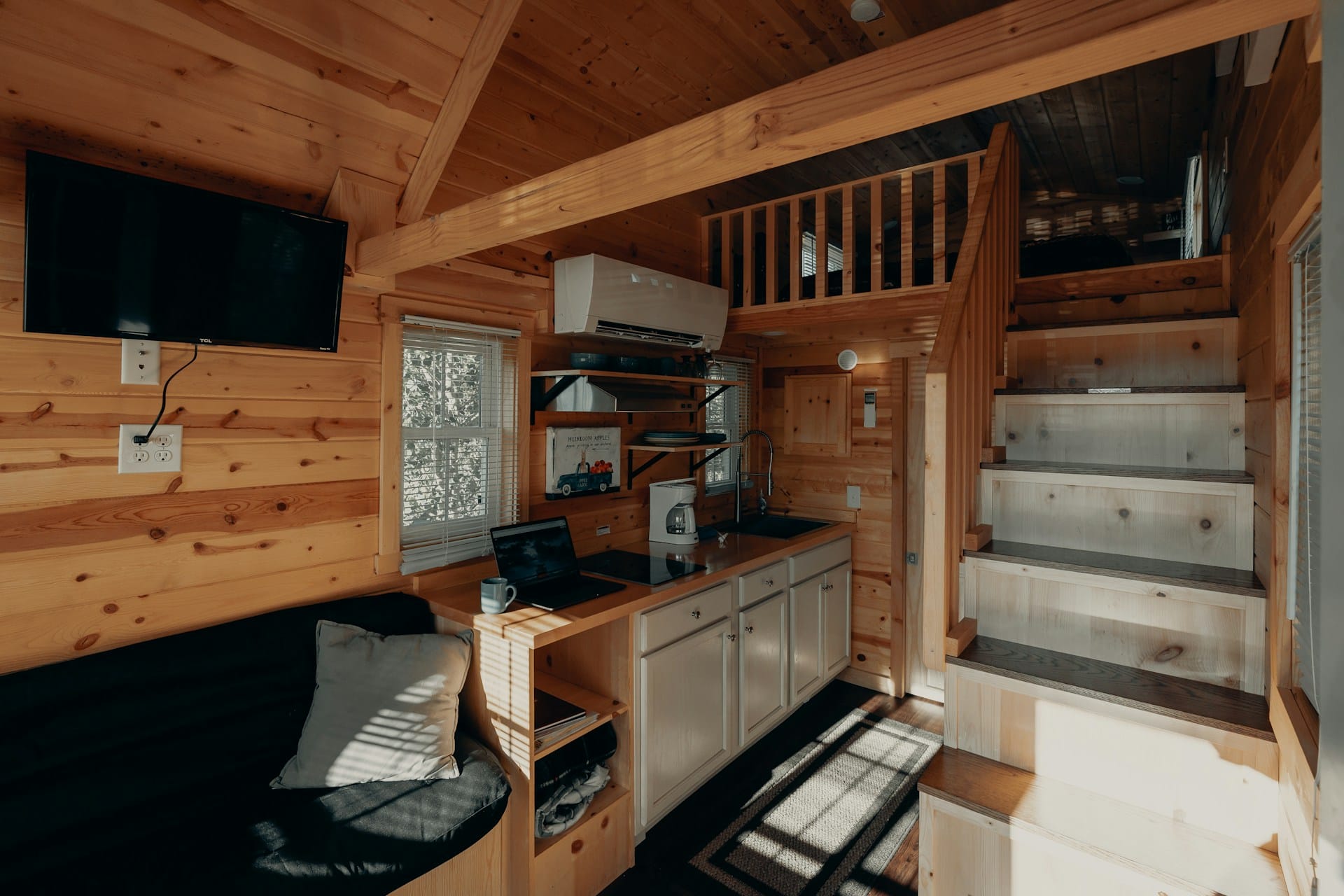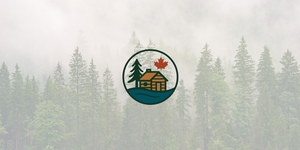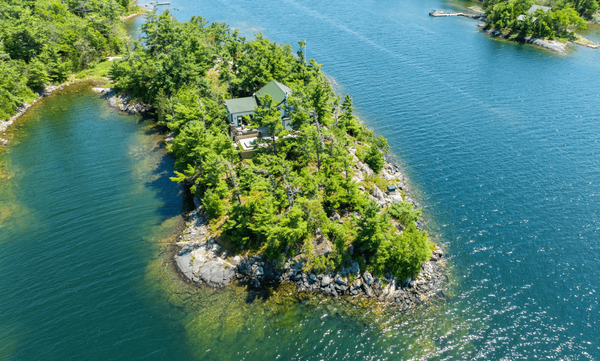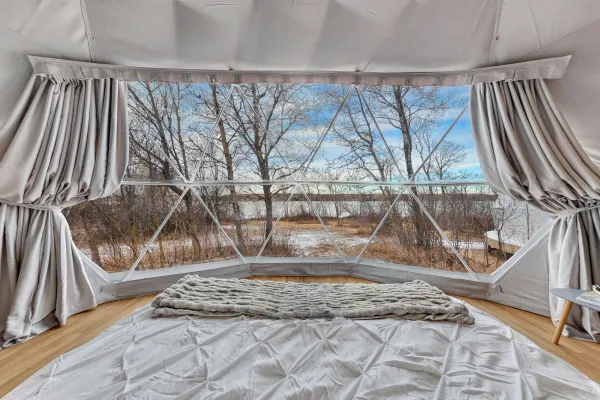Thinking of fixing up your cabin or cottage before putting it on the market? Smart move. The right renovations can increase your cottage’s value and attract buyers, especially in Canada’s competitive recreational property market. But be careful – not every upgrade pays off. Below, we’ll explore 6 cabin renovations that boost resale value and 4 that often don’t, so you can invest wisely.

Renovations That Boost Resale Value
Not all improvements are created equal when it comes to return on investment. Here are six cabin renovations in Canada that typically offer solid bang for your buck:
1. Upgrade Insulation and Weatherproofing for Year-Round Use

If your cabin is a three-season retreat, adding proper insulation and sealing drafts can transform it into a comfortable year-round cottage – a huge selling point. Improving attic and wall insulation often delivers one of the highest ROIs of any renovation. In fact, Remodeling Magazine found that adding attic insulation yielded about a 117% return on investment at resale. That means you could recoup the cost and then some. By weatherproofing (insulating walls, sealing windows, insulating pipes, etc.), you not only lower heating costs for yourself or future owners, but also broaden the buyer pool to include those looking for winter-ready properties. Buyers will appreciate a cabin that’s cozy in January, not just July, making insulation upgrades a top “increase cottage value” project.
2. Replace or Repair an Old Roof

Few things scare off buyers faster than a leaky, aging roof. Investing in a new roof or substantial roof repairs before sale can boost your cabin’s resale value and prevent negotiations over a damaged roof later. While a roof replacement may not be glamorous, it retains a large chunk of its cost in added value – generally 60% to 75% ROI in Canada. More importantly, a fresh roof signals that the property is well-maintained and spares the buyer an immediate big expense. Realtors often note that a new roof can help a home sell faster and for a better price versus comparable listings with old roofs. In a country known for heavy snow and rain, buyers of cabins and cottages place high value on a solid, worry-free roof. So if your shingles are curling or the roof is near end-of-life, consider replacing it. You likely won’t get every dollar back, but you’ll protect your sale price and attract more confident buyers.
3. Add or Improve a Deck and Outdoor Living Space

Cabin life is all about the great outdoors. A spacious deck or porch extends the living area and is a feature that almost every cabin buyer in Canada loves. Whether it’s a wooden deck overlooking the lake or a wrap-around porch, outdoor living space adds both enjoyment and value. Renovation experts estimate that a professionally built wood deck can recoup roughly 73% to 100% of its cost on resale - a high return for a renovation. The appeal is obvious: a deck creates an extra “room” for summer BBQs, stargazing, or relaxing with a book. It makes your property feel larger and more usable, without major construction. Even a smaller upgrade, like replacing worn deck boards or adding a simple lakeside patio, can boost curb appeal and perceived value. If you’re handy, this is a project you might tackle yourself (with proper permits), but even hiring pros is often worth it given the strong ROI. Just be sure to use materials that suit the climate (pressure-treated lumber or composites) and maintain that inviting outdoor living space for buyers to see.
4. Moderate Kitchen and Bathroom Updates (Not Overhauls)

Kitchens and bathrooms sell homes – and cabins are no exception. If your cabin’s kitchen is stuck in the 1970s or the bathroom is looking a little rough, updating these key spaces can significantly increase resale value. The key is to avoid overspending on ultra-luxury finishes (we’ll touch on that later) and focus on functional, mid-range upgrades. For example, repainting or refacing dated cabinets, updating the countertops with durable surfaces, installing a new efficient fridge or stove, or replacing an old vanity and toilet can go a long way. These types of modest remodels in kitchens or baths often recoup 75% to 100% of their cost on resale, especially if done with broad appeal in mind. A “tastefully done kitchen remodel is a wise investment” that makes the space more modern and functional without going overboard. The same goes for bathrooms – a fresh coat of paint, new faucet and fixtures, or adding a shower to a half-bath can make a big difference.
Many cabins were built as simple seasonal getaways, so bringing the kitchen and bath up to date (think easy-clean surfaces, ample storage, and maybe laundry hookups) can dramatically improve your cottage’s value and attract buyers who want modern comforts in a rustic setting.
5. Install Energy-Efficient Windows and Doors

Upgrading old single-pane windows or flimsy doors is another renovation that pays off, especially in a climate with cold winters and bug-filled summers. New energy-efficient windows and exterior doors make a cabin more comfortable and cheaper to heat, which appeals to practical buyers (and cottage appraisers). You might not think of new windows as a sexy upgrade, but they typically recoup around 50% to 75% of their cost at resale in Canada. More importantly, this upgrade complements other improvements like insulation and roofing – together they signal that the cabin is weather-tight and well-maintained. Double-pane (or triple-pane) windows, proper weatherstripping, and an insulated front door will keep winter drafts out and cool air in during summer. Beyond energy savings, they also improve curb appeal and eliminate a task the buyer would otherwise have to do. If your cabin’s windows are decades old and drafty, or you still have that vintage wood door that swells every rainy season, an update here is a good investment. Just keep the style in line with the cabin’s character (e.g. wood-framed windows or cottage-style doors) so the upgrade feels natural to the property.
6. Boost Curb Appeal and Do Essential Maintenance

Sometimes, it’s the small upgrades and repairs that yield surprisingly high returns. Think of this as the “catch-all” renovation: tackling deferred maintenance and sprucing up the first impressions. A cabin that looks cared-for will simply sell for more. In fact, basic curb appeal improvements like painting the exterior or updating the front entry can deliver an 80% to 90% return on investment. So, re-paint that peeling siding, stain the deck, replace broken railings, and clear up any overgrown brush or dead trees in the yard. These fixes are relatively low cost but instantly make your property more attractive. Other high-ROI maintenance items include replacing an old garage door or upgrading exterior lighting for safety – projects that make the place look fresh and functional without huge expense.
Also, address any structural or mechanical issues: if the water heater is ancient, the septic system needs repair, or the electrical wiring is outdated, investing in those fixes will preserve your cabin’s value (and prevent turn-offs during a home inspection). Most buyers of cabins want a retreat, not a restoration project. Showing that your cottage has been lovingly maintained – a solid foundation, no plumbing leaks, a neat gravel driveway, perhaps some native plants or a fire pit area for ambiance – can translate to higher offers. Many of these efforts don’t fall under flashy “renovations,” but they protect your property value and boost buyer confidence, making them very much worth it.
Renovations That Often Don’t Pay Off
Now for the flip side: certain upgrades may be fun or luxurious, but they don’t necessarily increase your cabin’s resale value enough to justify the cost. Here are four renovations that often do not provide strong ROI for a Canadian cabin or cottage:
1. High-End Kitchen or Bathroom Overhauls

It’s easy to get carried away dreaming of a chef’s kitchen or spa-like bath in your cabin, but be cautious: major upscale remodels rarely pay back what you put in. While a basic kitchen update is great (as discussed above), spending big on a complete overhaul with top-of-the-line appliances, custom cabinetry, and imported granite might only return about 50% (or less) of the money spent. Similarly, tearing out a bathroom to install marble tile, high-end fixtures, or a luxury rain shower might wow some buyers but won’t dramatically raise the sale price to cover your costs. Remember, a cabin is not a primary luxury home – most cottage buyers are not looking for a gourmet kitchen with a $10,000 stove; they value charm and functionality over glamour. One report notes that costly state-of-the-art kitchen appliances and finishes won’t significantly increase resale value because buyers won’t pay a premium for features they see as excessive.
The bottom line: keep upgrades moderate. Make the kitchen and baths nice and modern, but don’t turn them into luxury showpieces expecting a higher listing price. Over-improving beyond what’s typical for your cabin’s area can actually backfire by pricing you out of the local market.
2. Luxury Amenities like Hot Tubs and Pools

A bubbling hot tub on the deck or a pool by the cottage might sound like heaven to you, but financially these are not great resale investments. The installation and maintenance costs for features like hot tubs, in-ground pools, or saunas are high, and many buyers are hesitant to take them on. In fact, studies show a hot tub’s resale value is only about 25% to 33% of what you paid for it. That means if you drop $10k on a hot tub, it might effectively add only $2.5k–$3k to your home’s value – or possibly nothing if the buyer isn’t interested. Some buyers even see an older, non-functioning hot tub as a negative, due to removal costs.
Pools are similar: in Canada’s climate, a swimming pool gets use only a few months a year but requires upkeep year-round. Many cottage buyers would rather swim in the lake or not have the hassle, so a pool often won’t fetch you a higher selling price (and could narrow your buyer pool, so to speak). The ROI on these luxury leisure items is generally low. Of course, if you plan to enjoy a new hot tub or sauna for years before selling, that’s a lifestyle choice – just know it’s primarily for personal enjoyment, not increasing the property value.
3. Over-Personalized Decor or Niche Upgrades

One charming aspect of cabins is making them your own – quirky paint colours, custom woodwork, themed decor – but be careful not to over-personalize if resale is on the horizon.
Highly specific design choices or niche upgrades usually don’t add value for the next owner. For example, wall-to-wall shag carpet in your favourite colour, a built-in sound system, or converting a small bedroom into a wine cellar or art studio might suit your tastes, but a buyer could see it as a headache to undo. Bold design trends can especially be a gamble. Today’s fashionable patterned wallpaper or trendy light fixtures might look dated just a few years from now, making the cabin seem less appealing. The consensus from real estate experts is to stick with timeless, neutral finishes when prepping for sale. That means neutral paint (save the cabin-red accent wall for your next place), standard fixtures that are good quality but not outrageously expensive, and leaving flex space for buyers to imagine their own uses. Similarly, high-end custom features (like a $20k professional gas range in a tiny cabin kitchen, or an elaborate custom stone fireplace) often won’t pay off – buyers won’t automatically add $20k to their offer for that range. In short, avoid sinking money into highly customized upgrades that reflect personal preference more than broad appeal. Before investing in a unique renovation, ask yourself: will most buyers see value in this, or just me?
4. Major Additions or Expansions with Low ROI

Bigger isn’t always better when it comes to selling a cabin. Adding square footage – such as building a large addition, a sunroom, or a second story – is very expensive and can easily overshoot what buyers in the area are willing to pay.
For instance, enclosing a porch to create a fancy sunroom might be enjoyable, but many buyers won’t value it enough to cover the construction cost. The same goes for constructing a huge garage, guest house, or doubling the cabin’s size with an extension. If your property is in a region of modest weekend cabins, turning it into a luxury mini-mansion could make it hard to sell – you end up with the priciest place on the block. Generally, you’ll get better ROI by improving existing space (finishing a basement or loft, for example) rather than massive additions. Of course, there are exceptions: if your cabin literally has one small bedroom and you add a second, that could significantly raise value by meeting buyer expectations.
But for the most part, think twice before undertaking major expansions purely for resale. They tend to be high cost, disruptive, and yield only a partial return. It might make sense if you need it for your own use (e.g. more family space) and plan to hold the property long-term, but if a sale is imminent, smaller-scale improvements usually make a better investment.
Making the Right Renovation Decisions

Every cabin is unique, and so is every market. The best renovations for resale in a remote woodland cabin might differ from those in a high-end Muskoka lakeside cottage. Always consider your property’s location, your budget, and your target buyer. Talk to local real estate agents or appraisers who know what Canadian cabin buyers are looking for this year. They can tell you if, say, adding a bathroom or upgrading the dock will significantly boost your particular cabin’s value, or if it’s already at the top of the market.
In general, focus on core improvements that enhance the cabin’s functionality, durability, and broad appeal. Those tend to be the cabin renovations that boost value consistently – things like keeping the structure sound, the heat on, and the surroundings inviting. On the flip side, approach glitzy or highly specialized projects with caution if you’re expecting a dollar-for-dollar payback.
By prioritizing the right upgrades, you can increase your cabin’s charm and its market value. Ultimately, the goal is to spend smartly so that when the right buyer comes along, they see your property as a well-maintained, move-in-ready Canadian retreat – and one that’s worth every penny of the asking price.
Good luck with your renovations and happy cabin living!






Join the Conversation